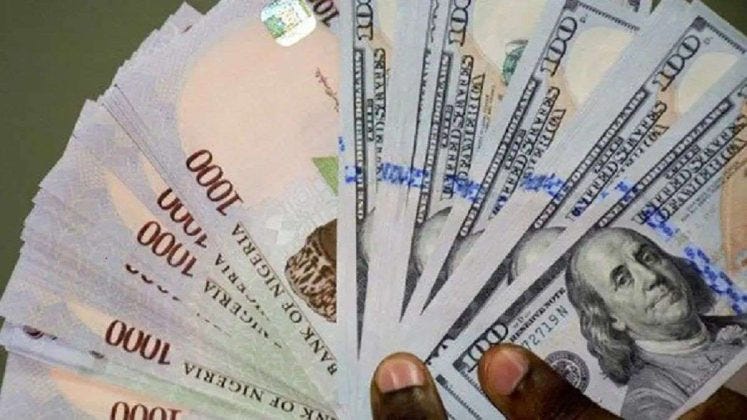Naira Extends Rally on Declining Foreign Reserves
By Ogochukwu Ndubuisi-
The Nigerian local currency, the naira, appreciated against the US dollar by six basis points to close at N1,499.10 in the official FX market, according to spot FX data from the FMDQ.
FX liquidity at the Nigerian Foreign Exchange Market (NFEM) remained stable, with transactions consummated between the range of $/₦1,497.00 and $/₦1,501.00 on Monday. At the parallel market, the naira remained flat at N1,505 amidst a slowdown in supply risks.
The exchange rate settled at N1,500,15 on Friday, recording marginal gains week on week despite the fact that the Central Bank of Nigeria (CBN) failed to boost liquidity in the official window.
In February, the naira fell by 1.69% in the official market but rose by 7.33% in the parallel market, bringing its year-to-date gain to 2.48% and 9.67% in the official and parallel markets, respectively. The exchange rates stability costs huge out flow from the external reserves since the beginning of the year. In 2025, the gross external reserves balance has dropped by $2,461 billion.
The latest data obtained from the Central Bank of Nigeria showed that foreign reserves fell further, settling at $38.416 billion at the end of February, 2024 from 3-year high. The decline was triggered by sustained FX intervention sales to banks to boost FX level in the official markets.
In a macro update on Nigeria, Verto FX call for bold move to refrain from an oversupply of US dollars from the CBN directly in a bid to narrow the official and parallel markets. Analysts said accretion into Nigeria’s foreign reserves slowdown amidst uncertainties in the global commodities market.
Oil prices remained steady, supported by positive economic data from China but weighed down by concerns over U.S. tariffs and ongoing uncertainty surrounding the Russia-Ukraine conflict.
Brent crude futures dipped 10 cents (0.1%) to $72.71 per barrel by 11:49 a.m. EST (1649 GMT), while U.S. West Texas Intermediate (WTI) crude declined 20 cents (0.3%) to $69.56.
Meanwhile, gold prices rebounded over 1% after hitting a three-week low in the prior session, driven by a weaker dollar and renewed safe-haven demand amid worries over U.S. tariff policies. Spot gold climbed 1.1% to $2,891.29 an ounce, while U.S. gold futures rose 1.9% to $2,902.30. North Korea Behind $1.5bn Cryptocurrency Heist, Says FBI
MarketForces Africa.



